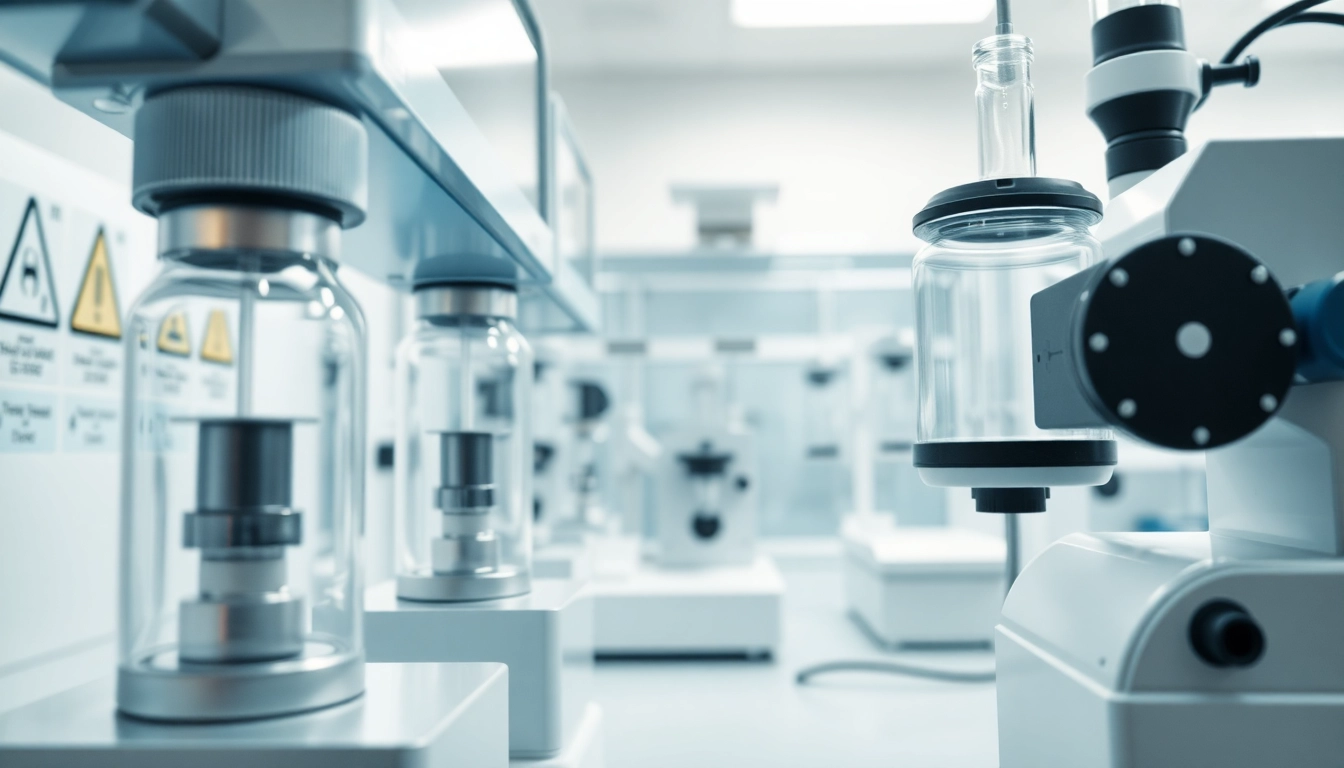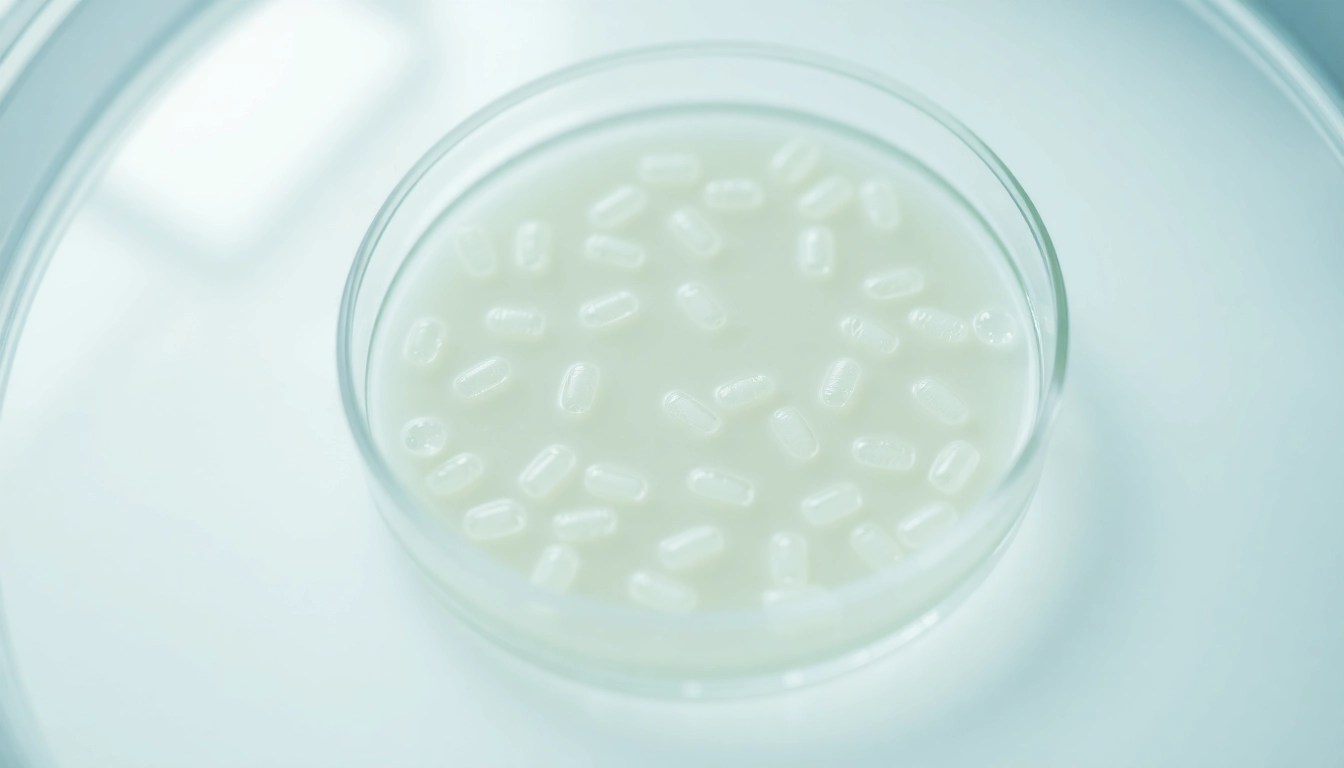Understanding Hydrogen Peroxide Detection
Hydrogen peroxide (H2O2) is a powerful oxidizing agent and a versatile chemical compound widely used in various industries, from food processing to pharmaceuticals. Its effectiveness as a disinfectant and bleaching agent makes it a crucial substance for ensuring safety and hygiene. However, with its high reactivity and potential hazards, Hydrogen Peroxide detection is essential for maintaining safe operating environments and complying with regulatory requirements. This article will explore the various aspects of hydrogen peroxide detection, including its importance across different industries, detection methods, equipment selection criteria, best practices, and emerging trends in detection technology.
What is Hydrogen Peroxide?
Hydrogen peroxide is a colorless liquid with the chemical formula H2O2. It is recognized for its strong oxidizing abilities, being capable of breaking down organic compounds and effectively killing bacteria, fungi, and viruses. As a result, it has become an indispensable tool in industries requiring strict hygiene standards, such as healthcare, food production, textiles, and environmental sanitation.
In addition to its use as a disinfectant, hydrogen peroxide serves various functions in industrial processes. It can be found in bleaching agents, antiseptics, and even in water treatment applications where it helps to reduce pollutants. However, its reactive nature can also pose risks, including potential explosions and toxicity, underscoring the importance of proper detection and monitoring systems.
Importance of Detection in Various Industries
Detection of hydrogen peroxide is vital in numerous settings. In healthcare facilities, monitoring levels of H2O2 ensures that sterilization processes are effective and that staff and patients remain safe. In the food industry, its presence is closely monitored to prevent contamination and ensure product safety. Chemical manufacturing requires precise control over H2O2 concentrations to maintain production efficacy and ensure compliance with safety standards.
The risks associated with hydrogen peroxide vary by concentration; therefore, effective detection methods can help prevent accidental overexposure. Industries are committed to implementing strategies that emphasize risk management, regular monitoring, and a robust understanding of the chemical’s behavior in different environments. As regulations surrounding chemical safety become stricter, accurate detection of hydrogen peroxide becomes increasingly important.
Basic Principles of Detection Methods
Detection methods for hydrogen peroxide can be categorized into several types based on the principles they utilize. The primary principles include chemical reactivity, electrochemical measurements, and spectroscopic techniques. Understanding these principles can help identify the best method suited for a specific application or environment.
1. Chemical Reactivity: This principle focuses on the reactions hydrogen peroxide undergoes with specific reagents to produce measurable changes. Chemical detection methods might involve colorimetric assays where hydrogen peroxide reacts with an indicator, changing color in accordance with concentration levels.
2. Electrochemical Measurements: Electrochemical sensors have gained popularity as sensitive devices capable of measuring hydrogen peroxide concentrations by detecting current signals generated during redox reactions. These sensors can provide real-time monitoring with quick response times, making them ideal for dynamic environments.
3. Spectroscopic Techniques: Methods such as infrared spectroscopy exploit the way hydrogen peroxide molecules absorb light. Spectroscopic methods offer high specificity and can provide detailed information about the sample’s composition, though these devices tend to be more complex and expensive.
Common Techniques for Hydrogen Peroxide Detection
Colorimetric Methods
Colorimetric detection methods involve chemical reactions where hydrogen peroxide interacts with a dye or specific reagent. This interaction results in a color change that can be quantitatively measured using optical techniques. The color intensity is directly proportional to the H2O2 concentration.
One of the most common applications of colorimetric methods is in laboratory settings where small quantities of hydrogen peroxide need to be detected. These methods are often favored for their simplicity, cost-effectiveness, and ease of implementation in portable test kits. However, the sensitivity and accuracy of colorimetric assays can be influenced by other substances present in the sample, making it essential to conduct controlled tests.
Electrochemical Sensors
Electrochemical sensors offer a highly efficient way to detect hydrogen peroxide by measuring the electrical changes that happen during redox reactions related to H2O2. These sensors typically consist of working, reference, and counter electrodes, which are all housed within a sensor case. When hydrogen peroxide comes into contact with the electrodes, it undergoes an electrochemical reaction that generates an electrical current. This current is directly proportional to the concentration of hydrogen peroxide in the environment.
Electrochemical sensors provide several advantages, including high sensitivity, quick response times, and the ability to operate continuously, making them suitable for real-time monitoring in various applications. Additionally, newer models are designed to be compact and capable of integration into existing monitoring systems, enhancing operational efficiency.
Infrared Spectroscopy Applications
Infrared spectroscopy (IR) is a powerful analytical technique often used for detecting hydrogen peroxide due to its unique vibrational modes which can be measured in the infrared range. This method is especially useful in applications where the identity of the sample must be confirmed alongside quantitative measurements.
IR spectroscopy offers clear advantages in terms of specificity, allowing for the differentiation of hydrogen peroxide from other chemical substances present in a solution. However, the equipment can be relatively expensive and may require skilled personnel for operation, making it less ideal for environments where high throughput is necessary. Nevertheless, its application in laboratory and research settings remains pivotal due to its analytical strengths.
Choosing the Right Detection Equipment
Factors to Consider When Selecting Instruments
When selecting hydrogen peroxide detection equipment, several factors need consideration to ensure optimal performance and suitability for the intended application:
- Sensitivity and Range: It is crucial to choose instruments that can detect the required range of hydrogen peroxide concentrations relevant to your specific needs.
- Measurement Speed: In situations where real-time monitoring is critical, select devices that offer rapid response times.
- Environmental Compatibility: Ensure that the detection equipment is designed to withstand the specific conditions of the environment, including temperature and humidity levels, as well as potential chemical interferences.
- Ease of Use: Opt for user-friendly instruments, especially in settings where personnel may not have extensive training on complex technologies.
- Calibration Needs: Factor in the calibration requirements of the instruments, as some methods may demand regular maintenance or recalibration to maintain accuracy.
Comparing Meter Specifications
Once you have identified the necessary factors, it’s vital to compare specifications from various hydrogen peroxide detection meters. Look at characteristics such as:
- Detection Limits: The lower limit of quantification that can be reliably detected and measured.
- Linearity: The ability of the sensor to provide outputs proportional to the concentration of hydrogen peroxide over its measurement range.
- Calibration Methods: Evaluate whether real-time calibration is possible or if laboratory calibration is necessary.
- Data Output Formats: Consider how the data is presented (digital display, analog, etc.) and the capacity for data logging and analysis.
Integration with Existing Systems
At the time of equipment selection, consider how easily the new detection system can be integrated into your existing infrastructure. Compatibility with current monitoring systems can streamline operations and minimize disruptions. Look for detection devices that offer digital outputs compatible with software platforms used for data analysis and reporting.
Moreover, consider the potential for the integration of alarms or alerts associated with specific concentration thresholds, ensuring prompt responses to any rise in hydrogen peroxide levels. Integration not only enhances the ability to monitor hydrogen peroxide but also bolsters overall safety and compliance with industry regulations.
Best Practices for Accurate Measurement
Calibration Procedures
Calibration is crucial for ensuring accurate measurements of hydrogen peroxide concentrations. Different detection methods have specific calibration procedures, but some best practices remain consistent across the board:
- Routine Calibration: Equipment should be calibrated routinely using standard solutions of known H2O2 concentrations. This guarantees that the instrument’s measurements remain accurate.
- Environmental Conditions: Calibration should take place under the same ambient conditions in which the device regularly operates. Variations in environmental factors can affect sensor performance.
- Follow Manufacturer Guidelines: Always adhere to the manufacturer’s calibration procedures, as they will have been specifically designed for the instrument you are using.
Environmental Considerations
The environment in which hydrogen peroxide detection takes place can significantly influence measurement accuracy. Several factors must be taken into account:
- Temperature and Humidity: Both temperature and humidity can affect the sensor’s response. Ensuring temperature control and understanding how humidity influences readings can enhance data accuracy.
- Contaminants: Other chemicals present in the environment can interfere with detection methods. Instruments with cross-sensitivity should be used with caution, and specific protocols implemented to mitigate these effects.
- Adequate Ventilation: In the case of gaseous hydrogen peroxide, ensuring that there is proper ventilation in the monitoring environment can help provide more reliable measurements.
Common Pitfalls and How to Avoid Them
To maintain the integrity of hydrogen peroxide detection practices, awareness of common pitfalls is crucial. Here are a few challenges and strategies to overcome them:
- Sample Contamination: One of the most significant issues in chemical detection is ensuring that sample contamination does not occur. Always use clean sample containers and follow protocols to avoid handling errors.
- Calibration Failures: Calibration issues can lead to inaccurate results. Ensure that instruments undergo systematic calibration checks and establish a log of calibration records for future reference.
- Neglecting Maintenance: Regular maintenance of detection equipment is vital for sustaining operational efficacy. Set up a maintenance schedule to check operational integrity and address any faults promptly.
Future Trends in Hydrogen Peroxide Detection
Innovative Technologies on the Horizon
Emerging technologies in the field of hydrogen peroxide detection are becoming more sophisticated and tailored to meet industry needs. A few notable trends include:
- Smart Sensors: The development of smart sensors capable of streaming real-time data to centralized monitoring systems allows for better hazard management and predictive maintenance.
- Portable Detection Devices: The trend toward portability is pushing advancements in smaller, battery-operated detectors, making on-the-go measurements accessible in various settings.
- Integrated Chemical Monitoring Frameworks: More industries are moving toward integrated approaches that consider multiple chemical hazards, thus providing comprehensive monitoring solutions.
Impact of Regulations on Detection Practices
As the regulatory environment evolves, industries must adapt to new requirements concerning the safe handling and detection of hydrogen peroxide. Increased scrutiny from regulatory bodies often translates to higher standards for detection equipment and protocols. Recognizing and acting upon changes in legislation ensures compliance and minimizes health risks to workers and the environment.
Case Studies: Successful Implementations
Examining real-world scenarios where effective hydrogen peroxide detection systems have been implemented can provide useful insights. For instance, a large pharmaceutical manufacturer adopted state-of-the-art electrochemical detection systems to maintain strict compliance with health regulations. By realigning their monitoring protocol and integrating multi-sensor systems, they achieved a significant reduction in hydrogen peroxide exposure incidents, as well as improved operational efficiencies.
Another case involved a food processing plant where colorimetric detection methods were employed to ensure the safety of food products undergoing sterilization procedures. The implementation led to a marked decrease in product recalls, bolstering the company’s market reputation and trust among consumers.



